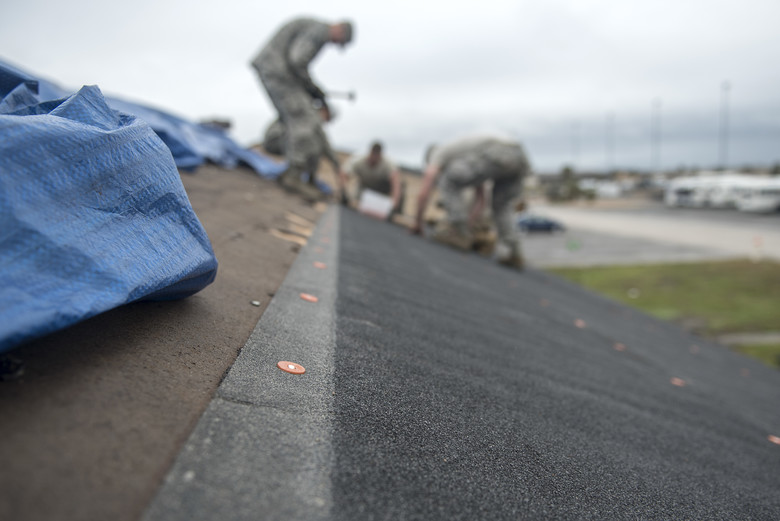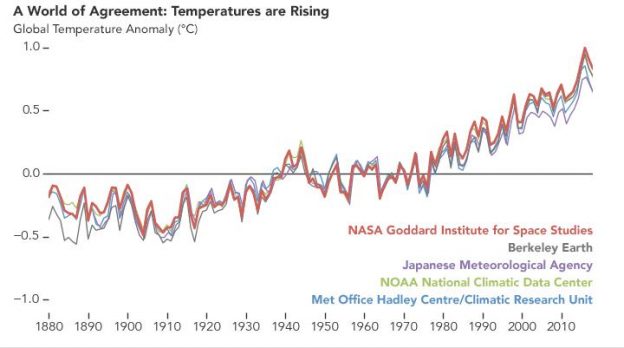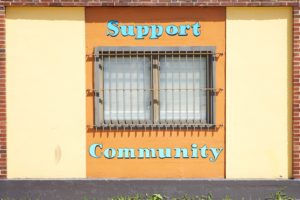With Hurricane Dorian just brushing past South Florida, we Miamians breathe a sigh of relief.
Miami is no stranger to hurricanes, and admittedly, we’re often more likely to glance at radar images of an approaching storm, only to shrug and minimize its potential, joking about stocking up on alcohol. But we all know deep down that hurricane destruction is nothing we would wish on anyone.
Hurricane Dorian hit the Bahamas especially hard the past two days as a Category 5 storm. With its slow one-mile-per-hour movement over the islands, the destruction left behind by the winds and water is absolutely catastrophic.
Unlike tornadoes and earthquakes, hurricanes are somewhat predictable. Meteorologists can anticipate with some accuracy when and where the impacts will be felt. But this predictability is a double-edged sword. Many of the same communities are impacted year after year, even multiple times per year, because hurricanes follow regular wind patterns up warm Atlantic waters, almost always hugging Carribbean islands before trailing up the North American coast.
Organizing a Public Health Response
Hurricanes will not always strike directly, however when they do, a prepared and coordinated response is absolutely necessary. In situations like these, public health practitioners lead the way. Food, water, shelter and medical services are four basic and immediate concerns in protecting communities during a hurricane. Organizations on international, national, state and community levels provide overall relief and support to people affected by hurricanes, representing one tier of public health response. Most organizations achieve this in two ways.
First, organizations respond immediately to hurricanes. The main priority during a hurricane is to save lives and prevent future damage. This is achieved through conducting and facilitating evacuations and providing shelter for individuals who seek a safe and secure environment outside their homes during and after a disaster. Take for example, the response of the American Red Cross in the South Florida region.
On Tuesday, August 27, Hurricane Dorian’s track was headed directly toward South Florida. Though Hurricane Dorian at the time was not scheduled to impact South Florida until Saturday night or Sunday morning, one of the Red Cross’s primary goals was contacting its disaster responder for the South Florida region, comprised of all active volunteers prepared to serve and to travel to make emergency preparations and provide relief. The Red Cross also touched base with numerous businesses, schools, community centers, complexes and churches that serve as Red Cross shelters during the time of a hurricane. These shelters are open to everyone to provide food, a safe place to sleep, health services (including mental health service), spiritual care, childcare, laundry and any additional disaster-related resources. Prompt correspondence with individuals volunteers and partners was crucial to ensure all these services were available.
The second way organizations support public health is through hurricane recovery. The main priority in recovery activities is to return to normal or an even safer situation following a hurricane. Typically, this component is the most difficult because this requires multiple resources and support beyond the capacity of a single organizations’ efforts and because we often lack a full understanding of the impact of the storm until seeing its aftermath.
In the case of Hurricane Dorian, the Bahamas are in dire need emergency relief services in and from every area to somehow rebuild and repair this country. This will require organizations to coordinate efforts with the government and collaborations with other organizations to be more effective in their response to Hurricane Dorian.
Roofs torn off, buildings leveled – these are some of the dramatic and devastating images after a hurricane. The strong winds are often a first thought in terms of biggest threat and potential destruction; Hurricane Dorian reached sustained winds of 185 mph in the Bahamas, with gusts up to 220 mph. But flooding and storm surges are the more frequent cause of death and the bigger public health threat. Photos from Hurricanes Katrina, Harvey and others show 18-wheelers submerged on highways and boats floating through neighborhoods, with flood waters hovering at second-story windows. Rising ocean levels further worsen the potential for flood and water damage. Beyond these devastating images, how do hurricane’s affect communities in the long term?
Long-Term Effects of Hurricanes
Although videos and photos of direct hurricane damage are often the ones that most impact us, these are not the full picture of the true lasting effects of hurricanes on a community. The immediate damage to buildings and infrastructure can shocking, but hurricanes also have lasting, indirect impacts that can cause more devastation.This includes the loss of electrical power; internet and access to clean water and basic sanitation; increased crime rates and the inability of employees to simply get to work.
Lasting and indirect impacts of hurricanes also encompass overall population health. Outside of direct trauma to the human body, health effects of hurricanes can present during various time points after a hurricane strikes. Beyond drownings and other injuries, severe flooding can create unsafe and unsanitary conditions. Fresh and bottled water are scarce after a storm, and local water sources run the risk of contamination from sewage and other pollutants. Stagnant water after a storm can be a breeding ground for disease-carrying mosquitoes and other infectious disease. Prolonged damp conditions can eventually lead to mold.
Consider the particular concern of respiratory illness during re-occupancy and rebuilding of hurricane-damaged infrastructure. Without doubt, mold growth is prevalent in residential buildings that have been flooded and may cause respiratory symptoms in residents.Mold is particularly concerning for individuals already susceptible to upper and lower respiratory illnesses, such as those with asthma or allergies, or those who are immunosuppressed.
Even healthy individuals without pre-existing conditions can be at risk during rebuilding efforts. The lack and inconsistent use of personal protective equipment (PPE) among residents and remediation workers increases their exposure to mold and other air contaminants. In thinking about the recent impacts of Hurricane Dorian to the Bahamas (with wind speeds greater than 185 mph and storm surges 18-23 feet above normal tide) we must anticipate distribution of appropriate PPE (such as N95 masks) and communicate the importance of its use to residents and relief workers.

Beyond reconstruction efforts, exposure to natural disasters can also severely affect mental health at astounding prevalence. As an example, residents of the New Orleans metropolitan area were estimated to have upwards of 49.1% 30-day prevalence of any DSM-IV anxiety-mood disorder.1 Hurricanes may cause the loss of property, valuables and the death of loved ones or pets. This, along with the lack of basic necessities such as food, water and medical care, are strongly associated with posttraumatic stress and general psychological distress.2
Even beyond mental health impact, hurricanes have the capacity to take away future livelihoods of affected communities as well. This can be seen clearly through the loss of jobs and the reduction of business, which in the Caribbean, is heavily dependent on tourism. Tourism continues to be a major economic driver for the Caribbean, a precedent established as early as 1778 with the opening of the Bath Hotel and the Spring House on the island of Nevis.
Direct hurricane damage can cause economic loss of infrastructure and as well as lost revenue for the time period of hurricane strike and reconstruction, which further tightens the budget for these tourism-dependent economies. Over the long term, hurricane season also decreases the number of days that tourism can occur in these areas. Given the established dependence of tourism on these islands’ economies, the industry and its infrastructure may also represent priority efforts to focus on, and in turn, re-building efforts become unequal across economic sectors. This leaves for uneven restoring of the islands’ communities.
Ultimately, re-building takes time and money, and this investment takes away from a community’s or an individual’s ability to prosper. The stronger and more powerful storms become, the further back communities vulnerable to hurricane strikes are held.
The Impact of Climate Change of Hurricanes
Unfortunately, hurricanes are getting worse. These days, any conversation about hurricanes has to include a mention of climate change. The global scientific community agrees: Climate-warming trends over the past century are undeniable, and human activity is the cause. To boot, the pace of climate change has likely been underestimated. As our techniques and technologies for measuring temperatures have become more sophisticated and reliable, scientists are realizing the situation is even more dire than previously believed.

Climate change includes heightened temperatures, both overall and daily record highs; increased precipitation, both rain and snow; and sea level changes, with a shrinking Arctic ice cap and rising sea levels. Climate change is not the sole cause for the seemingly increased severity of recent hurricanes and hurricane seasons, but it does heighten the impacts. With this combination of factors, it is likely that we will continue to experience even longer hurricane seasons and stronger storms. Dorian recently raised the question – which will become increasingly relevant in our warming world – of whether Category 5 is sufficient. Do we need a Category 6?
Towards a Better Future
As graduate students in public health, we anticipate continuing to refine our approach to organizing hurricane relief efforts. The short- and long-term destruction of communities – while tragic – show the resilience of human spirit in the face of adversity. Climate change itself provides another example of this adversity. As hurricanes become more common with rapidly changing climate, we must protect and support people’s health through these tragedies – not only by direct relief and aid but with continued advocacy and engagement to prepare for and prevent worsening conditions.
- What’s Your Public Health “Why”? - May 3, 2023
- Why Public Health? - April 16, 2023
- Call for Submissions: Burnout During the Pandemic - November 14, 2021
- Hurricane Dorian: Miamians Reflect on Public Health Response, Climate Change - September 4, 2019
- Why Public Health: Disparities in Health - August 25, 2019





Thank you for sharing your perspectives; stay safe!